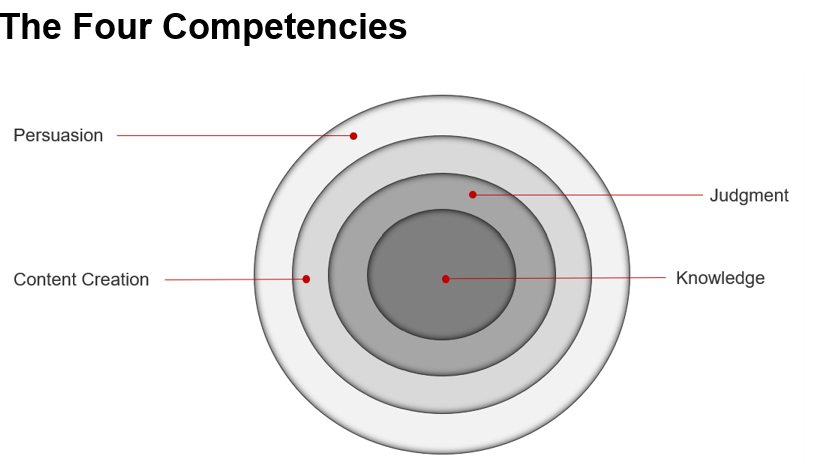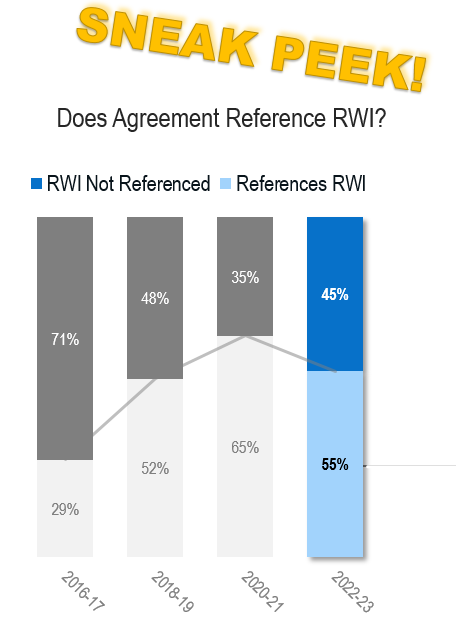
So many capable law firms spend countless hours strategizing how to attract more business and cultivate clients. But while most firms recognize that law is a business, they focus mainly on the proficiency of their work product and sometimes fail to appreciate the finer business relationship nuances that help to attract and retain business.
There may have been a day when client relationships were so tight that law firms had a lock on virtually all of a client’s flow and needed to do little to nurture the relationship. To be sure, there are still some high-stakes matters that inevitably are entrusted to only a small cadre of lawyers with proven track records and institutional connections to avoid second-guessing on why someone new was tried out if the result is suboptimal. And perhaps a client’s close personal relationship with a law firm friend or colleague influences some flow.
Otherwise, however, it is relatively open season. Clients use many law firms and are often open to expanding their roster, particularly for specialized or boutique-ish needs. They also tend to select individual lawyers, rather than law firms that then internally designate a partner to head the assignment. And they typically assign work based on practical factors that blend past experiences with the overall relationship dynamic—including steering away from irritants, unpleasant experiences, and noncompetitive fees. More and more, clients are considering diversity factors as well.
Among the most important decisions for an in-house lawyer is which outside counsel to hire and when to change horses. A client’s baseline expectation for all outside counsel is certainly quality work, so if the product falls short, whether due to sloppiness or worse, the relationship is obviously in peril. And, unsurprisingly, the internet and legal marketplace abound with advice about strengthening relationships by understanding the client and its needs, improving communications, and enhancing efficiency.[1]
But what about the smaller things? Does it also matter if a client’s emails or calls are not returned for hours or days? Should the client’s dissatisfaction with a product or service invite argument, rebuke, and a complaint to a more senior in-house representative? Are there typos in the client’s own name in drafts? Has the firm served up an engagement letter loaded with one-sided terms and conflict waivers? Is the bill twice what was expected?
Think of all the other commercial relationships in life where the enterprise offers quality goods, but the shopping experience is exasperating. The more critical the deliverable—whether for household use, for medical diagnosis and treatment, or for a technological innovation—the more a customer will tolerate the dissatisfaction. Conversely, for the mundane items or services that are in abundant supply, the exasperation can quickly alienate the customer.
The legal industry does not operate in a special bubble immune from commercial reality. Law firms should focus beyond their work product on the nuances, hiccups, and irritants that can likely be managed and mitigated but have the potential to snowball if left festering. This article accordingly drills down, based on the author’s decades managing a global in-house litigation and regulatory proceedings group and previous practice as a law firm litigator, on some of these finer points that can make a difference in attracting new business, reinforcing relationships, and avoiding needless disruption:
- Embracing the Fundamentals. Fundamentals are the substantive aspects of work product that every law firm should get right and that clients expect, and that may truncate the relationship if a contrary pattern emerges.
- Exhibiting Proper Etiquette. While a superstar lawyer hired for a critical assignment may be afforded more latitude, most clients will not tolerate flippancy, abusiveness, and arrogance.
- Handling “Difficult” Clients. Client representatives are human, bringing their stress and eccentricities to the relationship.
- Soliciting Business. Websites and blast client memos are far less likely to attract business than proper introductions, networking, and successes.
- Learning from Failures. Rather than burying a relationship failure by failing to deal with a fracture or blaming the client, what can be done to salvage and repair?
- Getting Noticed. Whether new to the legal practice or a veteran, there are ways to make a mark with a potential client.
Embracing the Fundamentals
Law firms universally claim to provide top-notch work product and to represent clients zealously. Some market themselves as smarter or nimbler than the competition. Others point to their deep experience handling certain legal topics. Many have slogans or taglines that purport to capture their special distinction and talents.
Fundamentally, however, while law firms themselves may recognize particularly impressive work product of peers—denoting a “lawyer’s lawyer”—many clients do not have the capacity or sensitivity to scrutinize those avowed credentials on that level. They instead measure success or failure largely by the result. At the same time, they do notice smaller nuances that tend to undermine credibility and that are easily avoided with care and diligence.
Some precepts are so basic that they require little discussion here. Obviously, a law firm should never lie to or mislead a client, eviscerating the entire relationship of trust and possibly implicating ethical issues.[2] Clients also expect and deserve respect and responsiveness, which may come at different levels but must always meet a threshold standard. And law firms should not overstate their expertise, as it is better to candidly pass on an assignment than risk the relationship when they prove to be outmatched.
Other fundamentals, however, impact the quality of work product and avoid the embarrassing hiccups.
Master the Facts and Law. First and foremost, a failure to master the facts and law will invite an awkward client discussion as to how something was missed. Bevies of postmotion submissions addressing matters that should have been detailed in the motion itself beg the question of whether balls were dropped even if the client ultimately prevails. Winning a clawback of discovery materials that never should have been produced is not a “victory” from a client’s perspective. More likely, these lapses will invite a discussion of whether the law firm should bear the cost of the needless sideshows, and raise concerns as to the firm’s quality controls.
Research should be thorough and updated. Factual investigations should leave open no loose ends and include a comprehensive review of documents, emails, and witnesses. In a world of electronic communication, it is no longer feasible or cost-effective for law firms to manually review every email and text, but the process must be robust and avoid surprises. And even then, law firms should never assume or represent that every fact has been definitively pinned down because something is often lurking around the corner.
Don’t Overpromise, Overpredict, or Guess. Clients understand uncertainty and risk, but they want their expectations to be managed realistically. Law firms can get overly enamored with their positions and make bold predictions that prove unsustainable. Even worse, preferring not to seem unprepared, they may shoot from the hip or make an educated guess that proves unfounded.
For better or worse, outcomes tend to be scrutinized with hindsight. If success depends on prevailing on a series of uncertain factors or arguments, they should be spelled out and realistically assessed individually and holistically. If adverse legal authority exists, it should be flagged. And above all, little in the legal world is a sure thing, meaning that even the most optimistic assessments should recognize and factor in potential adverse results. Law firm predictions often influence internal reserves, and overoptimism can translate into awkwardness when the ultimate price tag and reserves deviate.
The same is true with respect to scheduling. An aggressive prediction on when drafts will be ready does not help a client manage the workload. Whatever the prediction, if there are delays, the worst thing is for a law firm to grant itself an unannounced extension rather than engaging with the client and discussing the delay and a more realistic schedule.
Be Precise and Don’t Overrely on Technology. No law firm would knowingly file with the court a brief full of typos, skewed margins, and erroneous citations. Yet, strikingly, drafts go to clients even misspelling their names. Any client will resent being made a proofreader, but the sloppiness also may raise concerns about the substance of the entire work product.
Spell check and auto-citation are simply not replacements for good, old-fashioned proofreading and cite checking. The system may miss misspelled words that, in fact, spell other words. Autocomplete may select the wrong filling. Voice dictation often detects a close but unintended word or phrase. And the advent of artificial intelligence brings its own perils, including citation of fictitious authorities and outright plagiarizing of material that reads well but is entirely inapposite.
Exhibiting Proper Etiquette
If a restaurant keeps a customer waiting despite a reservation, ignores the customer once finally seated, and then responds indignantly to complaints about the slow service and quality of the food, would the customer ever return? So, too, law firms can lose sight of the old adage that “the customer is always right” and common rules of etiquette, damaging the relationship regardless of their substantive work product.
As a threshold matter, clients come in different shapes and sizes, so etiquette must be tailored to each client’s preferences and idiosyncrasies. Some are demanding micromanagers, and others delegate and defer to outside counsel. Some are supersmart, and others slower to grasp analysis. Some are inherently nice, and others always on edge with stress. The same is likely true among the law firm lawyers themselves, but potential business is not on the line when internal irritation occurs.
Despite these tailoring needs, several overarching principles always apply.
Understand the Organization-Versus-Representative Dynamic. The “client” in a corporate setting is typically the organization and not the individual liaison. Yet, the reality is that the day-to-day representative holds the reins and probably will be instrumental in securing additional assignments. Going over that individual’s head to register a complaint or question instructions will inevitably cause friction and should accordingly be done sparingly—and even then with extreme finesse that includes, if possible, the individual’s participation.
While the organization must be respected as the “client,” it acts only through its employees, who should be treated as part of the organization and not the arm’s-length adversary. If “Miranda” warnings must be given to protect the organizational privilege—which should be thoughtfully considered in context and not administered automatically—they can at least be expressed gently without making employee witnesses feel like they are under personal scrutiny and perhaps even need their own counsel.
Exploit Communication. Perhaps most important, communication is the key to sustaining any relationship, yet law firms seem to resort almost exclusively to emails these days for most purposes: to gather information, to provide drafts, and even to report developments. Sometimes, virtual meetings occur using online platforms, particularly in the new era when law firms allow lawyers more freedom to work remotely. But seldom does anyone seem to pick up the phone or arrange in-person meetings.
Whether the loss of physical and voice contact is the result of generational culture shifts or the pandemic, the diminishing occurrence of such contact is profound. Think about how close friendships inevitably erode when sustained only by long-distance, occasional texts. Communicating with a client is not a burden to be satisfied through the expedient of email, but an opportunity to reinforce the relationship and demonstrate proficiency. And when better to call live than to report a positive development?
How often to communicate again depends on the client’s appetite. But communications should be aimed at managing the client’s expectations and avoiding surprises:
- Developments should be reported promptly, and if a law firm needs to prepare a lengthy summary that gets reviewed up the chain, at least the headline should be reported immediately, with more to follow.
- Saving up several rounds of drafts or briefs to send along as a bundle does not help a client representative, who may prefer to review things piecemeal and stay ahead of the curve rather than receiving an overwhelming tome in bulk.
- Fire drills occur but should be flagged for the client immediately rather than by delivering an unexpected draft the night before it is due without warning.
- Drafting schedules should be discussed at the outset, in all events avoiding the Friday afternoon unadvertised draft that feels like a weekend homework assignment to a client. Law firms undoubtedly manage projects internally to accommodate levels of review, so why not factor in the client’s required lead time at the start?
- Law firm team members typically focus on a handful of matters at any time, although each may include dozens of workstreams. Those lawyers live and breathe the matters and so are intimately familiar with deadlines and scheduled calls. By contrast, in-house lawyers and business personnel may manage many dozens of matters and rely heavily on outside counsel for the granular aspects of each one. As a result, law firm emails months before laying out schedules and calls easily get lost in that overwhelming flow or overtaken by the crisis of the moment. Law firms should accordingly update and remind clients regularly about upcoming events and drafts. Even an email flagging that a call is about to begin with the dial-in number or video platform link can be a huge help to a client who has lost track of time or is absorbed in another situation.
Obviously, cost considerations may factor into the method and frequency of communication, but the client should be asked for any preferences.
If electronic communication is used, law firms should at least avoid needless debates and inordinate length and strings that are too unwieldy to read, much less synthesize. And emails and texts should avoid insensitive language or attempted humor that disrupts too many relationships when emerging in the wrong context. Similarly, if a law firm leaves voicemail in an age where few calls are answered by recipients or bygone assistants, the message should be short and succinct (or if the message is lengthy, leave an executive summary at the start).
Offer Reasonable Fees. Finally, fees should be reasonable, competitive, in proportion to expectations, and billed in accordance with the client’s preferred time schedule. They should be discussed up front and along the way, particularly if they start deviating from budgets or forecasts. While a bill in a “bet-the-company” or large transactional matter may be hard to scrutinize against a benchmark, commodity-type assignments in particular tend to have a standard range that will be the baseline for considering the law firm’s cost reasonableness and effectiveness. The best work and result will not likely invite a return engagement if the fees were disproportionate.
Handling “Difficult” Clients
Curmudgeons seem to be everywhere within the legal industry, and clients are no exception.[3] But it is important to distinguish a client who is ornery or having a bad day from one who is involved and demanding. While law firms may be used to total delegation by some clients, others will choose to participate actively and even debate issues with outside counsel. Although such clients are certainly more challenging, they nonetheless are just doing their jobs and can add value.
The Upside of Active Clients. An active client is arguably a benefit for law firms, not a burden. A client who closely manages a matter and has the intellectual skills to discern quality can be impressed and a source for future business recommendations. Client engagement and buy-in takes more effort but also avoids later misunderstandings about potential outcomes and cost. A client’s delivery may be inartful or miss the point at times, but it is worth the time to get on the same wavelength because clients can offer practical business observations and factual precision that outside counsel might otherwise fail to appreciate.
The Downside of Active Clients. On the other hand, some clients can indeed make the adventure more difficult without adding much value. There are the clients who fail to respond to requests for factual information or comments on drafts, or else provide comments at the last possible moment (which may be off target). There are the windbags who never stop talking and the insecure clients who seek to dominate any meeting or call. Others spin the story, forum shop for the advice they want to hear, and interpose outside counsel amid their internal politics and quest for credit. It is even possible that a client is simply petulant, offensive, or demeaning.
There is little to be gained from pushing back where a client’s behavior falls into one of these benignly unhelpful categories. It is better to maintain poise; express empathy and patience; and, if extreme, discreetly escalate the situation within the client organization. Escalation obviously may end up burning bridges so should be a last recourse.
But whatever the circumstances, there is no place for abusive or offensive conduct, and a law firm owes it to the client organization to flag the issue diplomatically at a higher level if it occurs.[4]
Soliciting Business
Law firm memos to clients on legal developments are certainly appreciated, but do they stand a better chance of landing business than the incessant stream of marketing pitches and spam arriving in personal inboxes every day? And perhaps presenting at symposiums and conferences or displaying flashy websites (featuring those catchy slogans and taglines) might raise a law firm’s profile. But those devices are expedients more to maintain a market presence than to secure specific assignments. Does any client really get sold by a catchphrase like (to pluck a few from the internet) “A Small Firm That Acts Big” or “Committed to Helping Our Clients Succeed,” or even “Lawyers You’ll Swear By. Not At.”?
Sometimes a new client may approach a law firm to take advantage of a specific lawyer’s expertise or reputation. Other times, a client may follow a lawyer who moves to a new firm. But otherwise, securing new relationships depends heavily on a firm’s networking and proper introductions.
Garner Introductions. The best channel for an introduction to a client’s legal function is its business team. The legal function, while typically independent, nonetheless is commercial and should respond favorably to a recommendation that comes from the revenue side of the company. If a law firm has steered business opportunities to the client, business personnel in particular should be open to reciprocating by means of such an introduction.
Alternatively, any relationship with the client’s business or legal personnel is an opportunity for an introduction. Perhaps a law firm lawyer and client businessperson are social acquaintances or their children attend the same school. Or perhaps the law firm represents another client in the same industry who can make the introduction.
Exploit Success. If a foot is already in the door, the best time to seek more assignments is in the wake of a victory or good work. If the success story benefited that client, it should be exploited promptly within the organization. But even if the impressive event was for another client, there is every reason to reach out more broadly to the firm’s existing and prospective client base to report the news and discuss how the firm can similarly help.
Don’t Be Picky. As a corollary, law firms should not be picky when trying to establish or expand a relationship. They may prefer assignments that are lucrative or high-profile, but client inventory is uncontrollable, and every firm needs to start someplace. Quality and efficient work will likely be recognized and rewarded with more.
Prepare Retention Letters Carefully. Finally, law firms that are lucky enough to establish or perpetuate client relationships should think hard before serving up one-sided retention letters that dictate a flurry of terms while essentially waiving all past, present, and future actual or potential conflicts. Bar association rules often require some sort of written engagement confirmation, but the versions that seem to proliferate both burden a client with the need to review the tome and elicit the wrong tone for a relationship that should feel close and trusted.
Learning from Failures
Balls get dropped and things go wrong in any relationship. Too often, a small problem gets magnified due to nondetection, avoidance, or mismanagement. And bigger issues are deemed futile or blamed on the client. How hiccups or worse get identified and dealt with can deeply impact the future client relationship.
Detection. Law firms are no different fundamentally than any other supervisory organization that monitors activity and seeks to detect issues. Individuals have a responsibility to self-report when something goes wrong, and more senior lawyers should be on the lookout for problems. Indeed, clients, particularly regulated ones, use surveillance tools as part of their compliance regime, begging the question of whether law firms should do the same to identify circumstances or language that deviates from the norm. If law firms are practiced at spotting problematic client communications, they should be able to apply the same skills to their own.
Obviously, if a client reaches out to complain about something, there is reason for concern even if the complaint is deemed misplaced. Red flags may signify client strain or discontent. Certainly, if business levels drop, that is an occasion to figure out why and explore how to repair the relationships. If lawyers internally refer to a client disparagingly, they are probably not treating the client with respect. And if a relationship lawyer is in regular touch with the client, even just to check in, the substance or tone may suggest that something is amiss.
Engagement and Repair. Even before determining what happened, engagement with the client is critical. The client is not only a source of information but the ultimate arbiter on whether the issue has been adequately addressed. The client should know that someone cares, will investigate, and will report back. By contrast, an ignored client will be left to stew and fester.
Central to dealing with any mishap is a heartfelt apology. If there are corrective measures to be taken, they should be discussed with the client to secure buy-in. Perhaps more frequent communication is needed, or better scheduling efforts. And perhaps the law firm’s fees should be reduced. In an extreme instance, staffing might be adjusted. Finally, whatever the issue, a solution should be considered more broadly to obviate similar problems with other clients.
Getting Noticed
Lots of lawyers are hardworking and smart, so standing out takes something special. Sometimes, getting noticed (whether within the law firm or beyond) is a matter of luck—getting assigned to the right client and matter at the right time. But whether junior or senior, lawyers do have significant control over their fate.
Track Record. Establishing a track record and subject matter expertise is key to attracting career attention. A dramatic success in a high-profile matter will result in instant fame. Otherwise, it takes sustained effort, but virtually anyone can become proficient in a legal area by working on a number of matters, continuously following developments, networking at relevant bar or industry conferences, and publishing insightful pieces. As reputations expand, word gets around, and clients follow.
Observers. You never know who is watching your performance beyond your own client. It may be a codefendant’s client. It may be a lawyer from another firm. It may even be a judge or regulator. The point is that lawyers should always do their best not only to serve their current client, but also because there is a larger audience that may notice. There have been plenty of occasions when this author noticed an adept lawyer representing another party and made it a point to hire that lawyer in the future.
Special Qualities. Above all, lawyers stand out when they exhibit special qualities. They may have a passion to win, fortitude and conviction, eloquence in delivery and advocacy, a flair for written work, a mastery of facts, a recognition of nuances others don’t pick up, a high degree of preparation and organization, and/or precision. This list is not exhaustive, and not every lawyer possesses every quality, but having some of them may help a lawyer rise above the crowd, particularly if a self-critical analysis identifies strengths and weaknesses so that the former can be exploited and the latter minimized. And, needless to say, it helps to be likable and have decent social skills.
Exploiting Opportunity and Taking Chances. Sometimes a lawyer is not looking for a change, but a unique opportunity arises. Perhaps the firm needs more resources in an area outside a lawyer’s comfort zone, representing an opportunity to expand horizons. Clients may need interim help, and there is no better way to get close to a client and learn its business than through a secondment. Pursuing something new and different does not sidetrack the career path; to the contrary, it demonstrates adaptability and utility.
Commerciality and Practicality. The old saying goes “millions for defense, not one cent for tribute.” The problem is that clients pay the bills. Law firms need to think commercially and practically to serve a client’s best interests by balancing results and cost. A quick and practical solution that obviates an expensive and lengthy slog may truncate an otherwise lucrative assignment but will likely earn the eternal gratitude of a client—and repeat business.
Conclusion
Law schools teach concepts and theory to get students intellectually ready to practice law, and law firms focus on producing outstanding legal work product to serve clients and gain reputational glory. These facets are the core of legal practice—but when viewed as a business, the legal profession could afford to pay more attention to the smaller nuances that matter in any commercial relationship.
* * * *
The author wishes to express his gratitude to James Beha, Jonathan Clarke, and Carrie Cohen for sharing their insights on this topic.
For a discussion of the evolution of the in-house counsel role and its relationship to outside counsel, see Eli Wald, Getting In and Out of the House: The Worlds of In-House Counsel, Big Law, and the Emerging Career Trajectories of In-House Lawyers, 88 Fordham L. Rev. 5 (2020). ↑
Interestingly, ethical rules typically proscribe only lies that are “material.” See Leonard M. Niehoff, How Not to Lie: A Don’t-Do-It-Yourself Guide for Litigators, 49 A.B.A. Litig. J. (Summer 2023). There is no room in a client relationship for lying, whether material or not. ↑
Mark Edward Hermann, The Curmudgeon’s Guide to Practicing Law (2d ed. 2020). ↑
For a discussion concerning clients to avoid altogether and setting ground rules with particularly insistent clients, see Lynda C. Shely, Armchair Quarterbacks, 50 A.B.A. Litig. J. (Fall 2023) at 23. ↑













